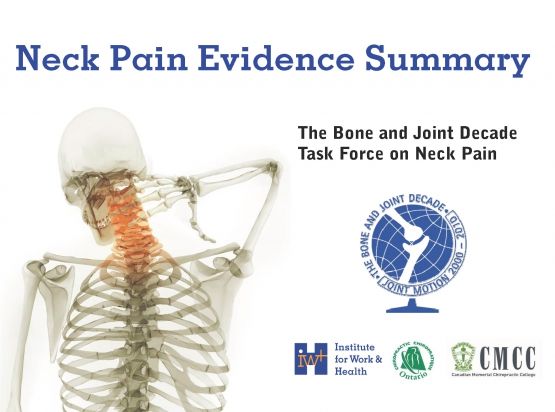Neck pain is common among workers, and has many different causes. It can include the chronic pain of workers whose jobs can strain their necks, such as lifting done by nurses’ aides and construction workers. It can result from accidents, such as whiplash in drivers who’ve been rear-ended. Neck pain also includes tension headaches in anyone who has had a tough day at work. Psychological and social factors also play a role in the onset and course of neck pain.
While neck pain can't always be cured, a variety of treatments are available. However, agreeing on which treatments are most effective has been an ongoing challenge for the clinical community. From 1999-2007, an international group called the Bone and Joint Decade Task Force on Neck Pain and Its Associated Disorders worked to bring some clarity to this and other issues on neck pain.
This international task force published more than 20 research studies and systematic reviews on neck pain. Its work produced a comprehensive picture of neck pain, including its causes, how many workers report it, and how it progresses, based on the research to date in 2008.
The Neck Pain Evidence Summary describes the main findings of the Task Force on Neck Pain. It was created by the Institute for Work & Health (IWH), in concert with the Canadian Memorial Chiropractic College, the Ontario Chiropractic Association and some members of the task force’s executive committee.
Who should use the evidence summary
This evidence summary is designed for health-care professionals who treat patients with neck pain, ranging from mild pain to whiplash. The summary includes a conceptual model of neck pain, helpful and unhelpful treatments, and guidance on assessing patients.
The summary is not a guideline or regulation. Clinicians should use their well-developed skills, clinical experience and patients’ expectations to also guide their decision-making.
